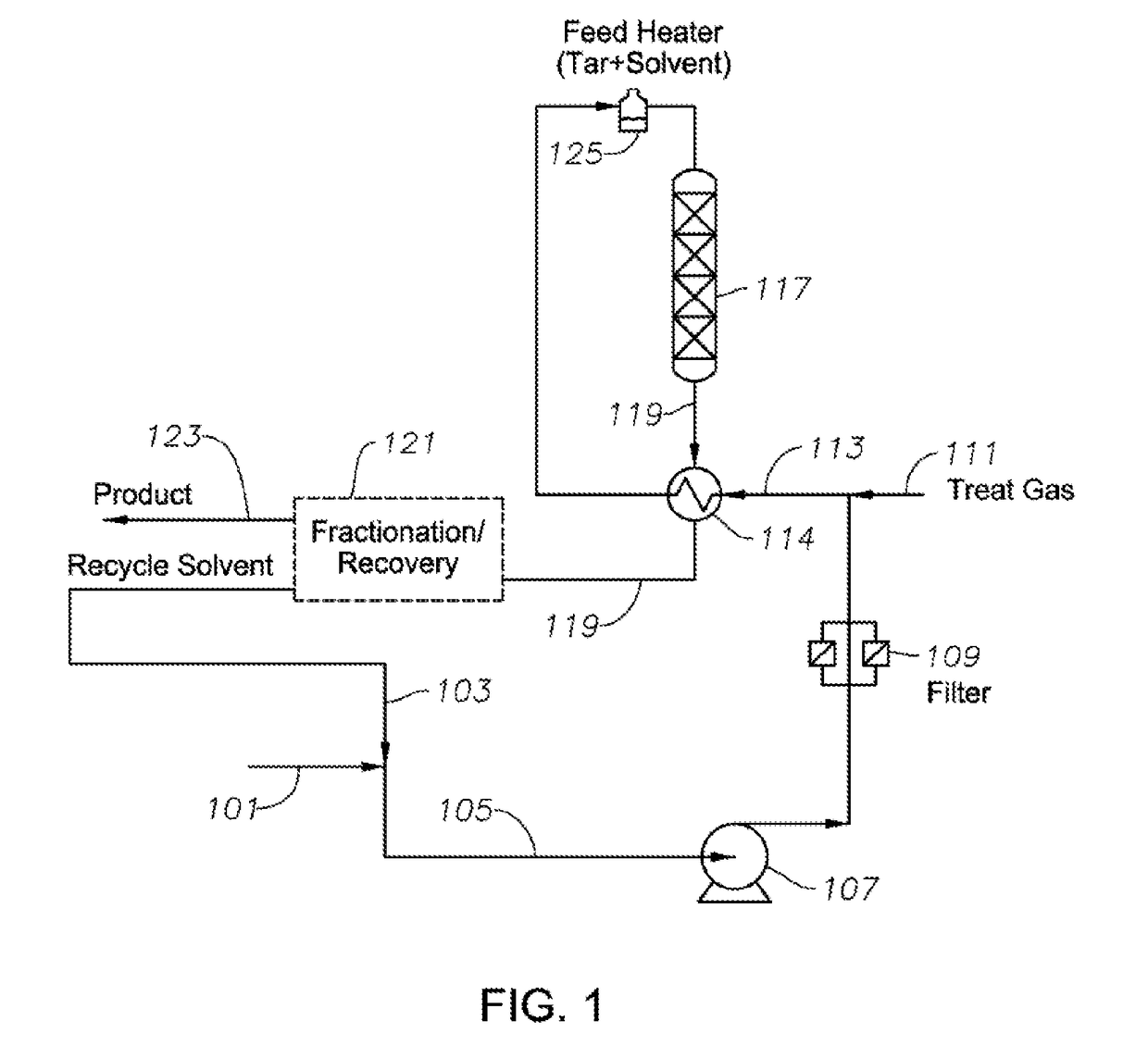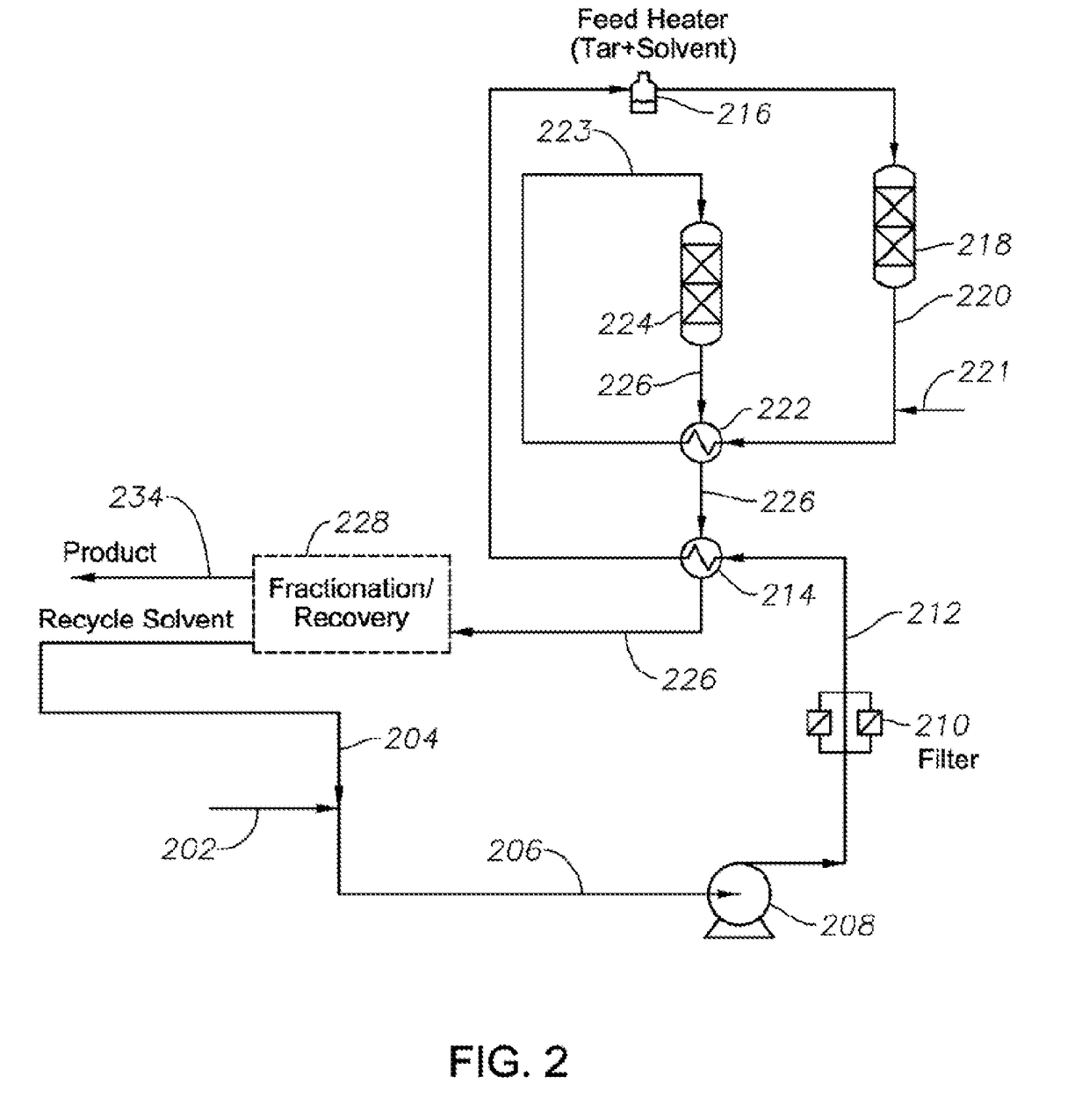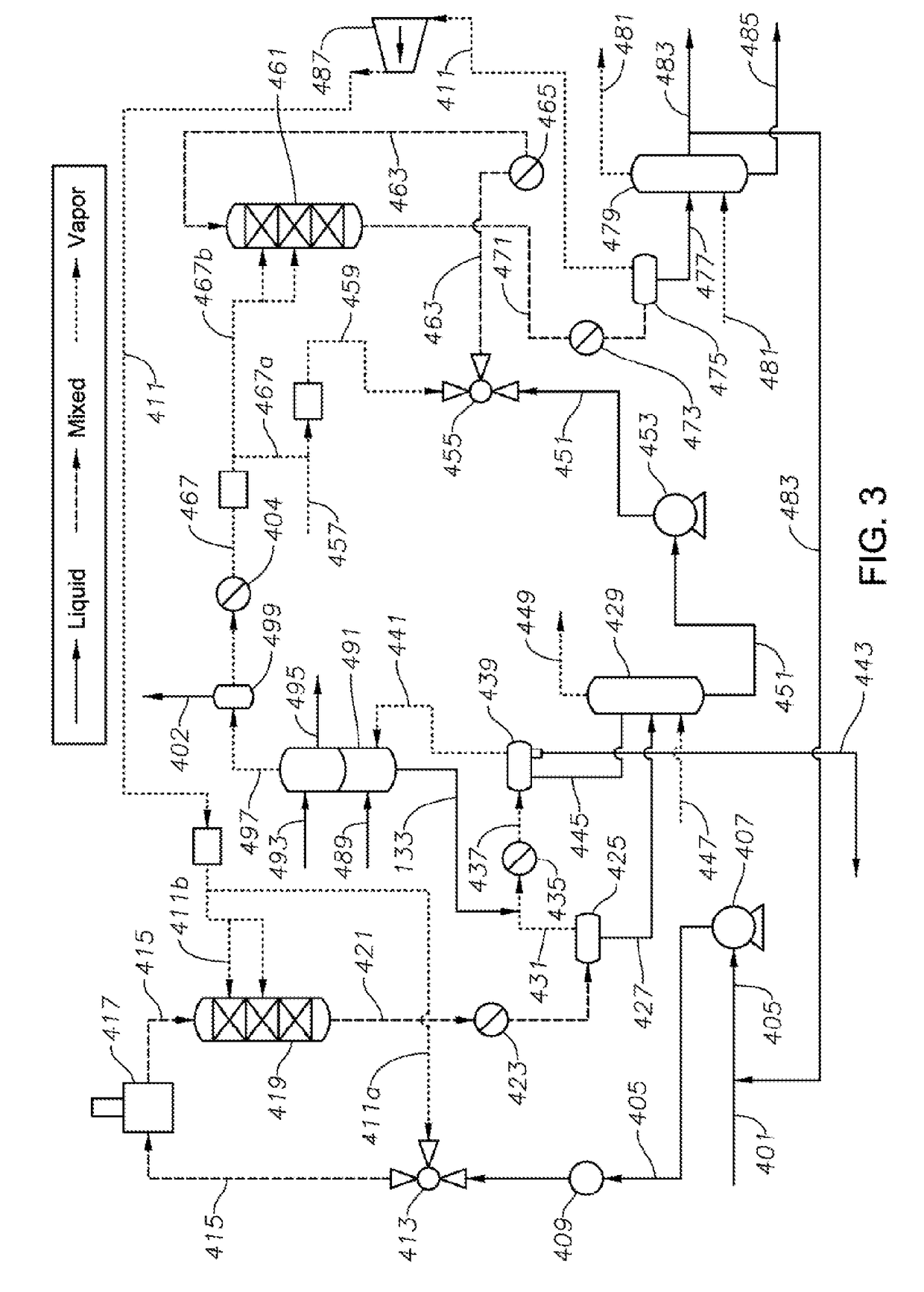Multistage Upgrading Hydrocarbon Pyrolysis Tar
- Summary
- Abstract
- Description
- Claims
- Application Information
AI Technical Summary
Benefits of technology
Problems solved by technology
Method used
Image
Examples
example 1
One-Stage and Two-Stage Processes
[0106]SCT having density 1.16 g / cm3 was mixed with a solvent having density 0.94 g / cm3. The combined feed was directed to one and two-stage fixed bed reactors. The one stage reactor was operated at 400° C., 1100 psi (7584 kpa) and a weight hourly space velocity (WHSV) of 0.5 h−1. The two-stage reactor was operated at 400° C. for first reactor stage, 370° C. for the second reactor stage, 1100 psi (7584 kpa) and a WHSV of 1.0 h−1. Hydrogen to combined feed ratio for both experiments was provided at 3000) scfb. A total liquid product was collected from each reactor and analyzed. The TLP from each reactor was distilled to form a SATC product for analysis. Table 3 indicates analysis of TLP from the one-stage and two-stage experiments. Table 4 indicates analysis of the distilled SATC product from the one-stage and two-stage experiments.
TABLE 3Comparison of total liquid products (TLP) from a one-hydroprocessingzone process and from a two-hydroprocessing zon...
example 2
ng Operating Conditions to Improve Product Quality
[0108]An extensive process condition screening test was performed to identify advantageous operating zone conditions for the reaction types explained above so that the target SATC product quality can be achieved for varying tar types without plugging the reactor. Experiments were conducted in a single reaction zone configuration. e.g., a configuration as in FIG. 1. For all experiments, the conditions included a 1-12 to feed ratio 3000 scf of H2 per barrel of feed (feed+utility fluid) and WHSV of 0.5 hr−1. The experiments were conducted by changing only one parameter at a time keeping the remaining conditions the same as in the base case. The adjusted conditions and results of the experiments are contained in Table 6 and Table 7.
[0109]The experiments were conducted using two different kinds of tar samples (though both are tar products of a pyrolysis process), representing the endpoints of the spectrum of the characteristics of typical...
example 3
[0121]In the present example, a configuration suited for upgrading easier to treat tars (relative to the range of tars tested) such as those having INN number is decreased to prevent incompatibility in the second reactor. In the first reactor, the temperature is relatively higher than the second reactor to increase the reaction rate for thermal cracking and the optimum temperature was found to be in the range of 400-425° C. to achieve notable conversion levels (50%). Then, the second reactor hydrogenation configuration performs a touch-up step to hydrogenate aromatic rings to decrease the product density. Since hydrogenation is favored at lower temperatures, the second reactor is operated between 350 and 375° C. In this configuration, a conventional hydrotreating catalyst may be preferred in both reactors (over selecting a hydrocracking catalyst in first reactor) from the perspective of lower cost, and experience in operation.
PUM
| Property | Measurement | Unit |
|---|---|---|
| Temperature | aaaaa | aaaaa |
| Temperature | aaaaa | aaaaa |
| Temperature | aaaaa | aaaaa |
Abstract
Description
Claims
Application Information
 Login to View More
Login to View More - R&D
- Intellectual Property
- Life Sciences
- Materials
- Tech Scout
- Unparalleled Data Quality
- Higher Quality Content
- 60% Fewer Hallucinations
Browse by: Latest US Patents, China's latest patents, Technical Efficacy Thesaurus, Application Domain, Technology Topic, Popular Technical Reports.
© 2025 PatSnap. All rights reserved.Legal|Privacy policy|Modern Slavery Act Transparency Statement|Sitemap|About US| Contact US: help@patsnap.com



